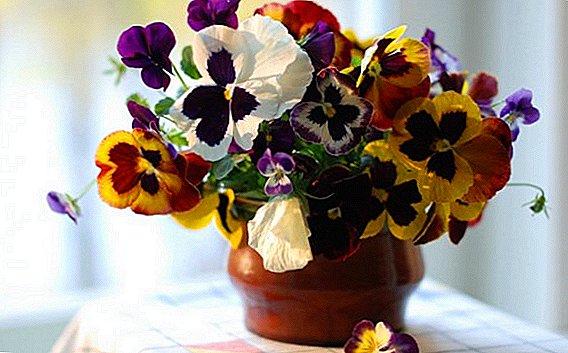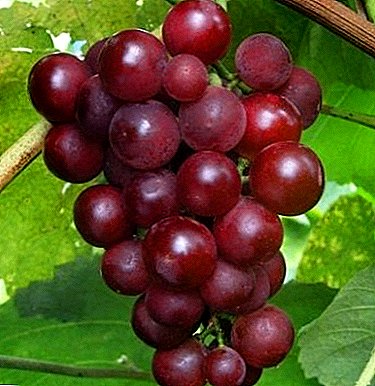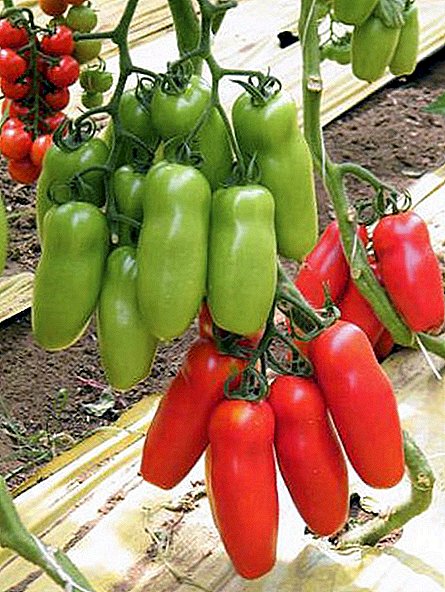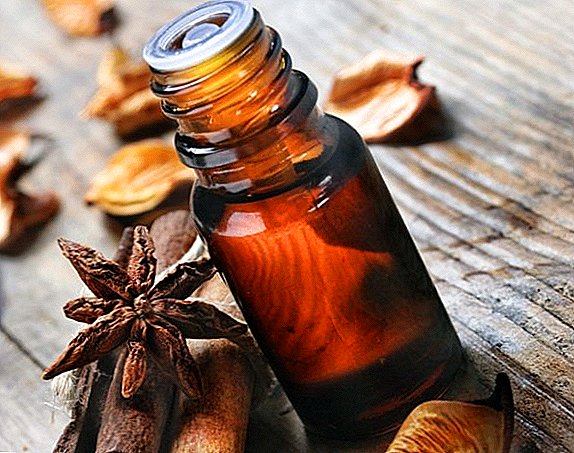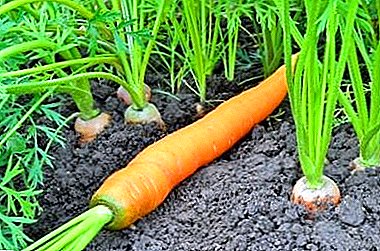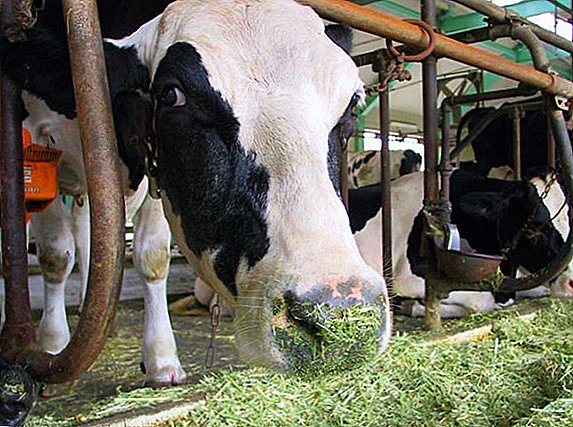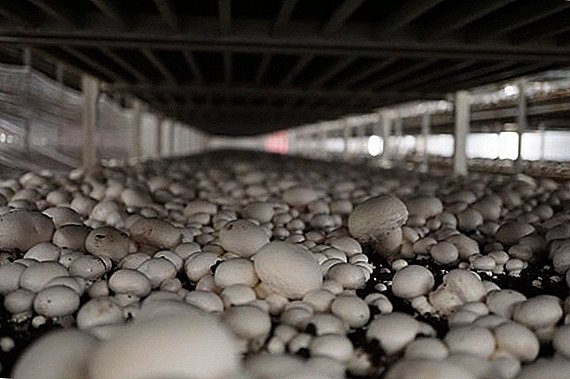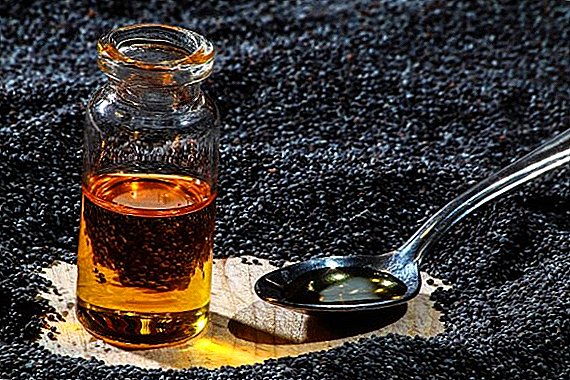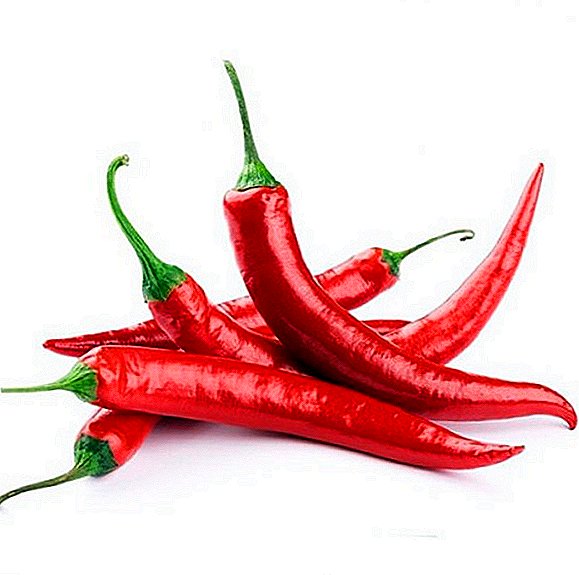 Planting bitter pepper made through the ready seedlings. Despite all the disputes of vegetable growers, growing a bitter vegetable is not at all difficult.
Planting bitter pepper made through the ready seedlings. Despite all the disputes of vegetable growers, growing a bitter vegetable is not at all difficult.
Even a beginner amateur grower will be able to achieve good fruits from a bush.
Culture brief
Today, almost 2000 varieties of pepper are bred. Bitter pepper is a vegetable culture that has a distinctive spicy taste. The seeds and internal laminae containing alkaloid capsaicin give a hotness to the vegetable.. 
Some varieties of hot pepper are so burning that one touch to them is enough to irritate the skin.
Culture is characterized by a long vegetation phase: 90-180 days. The plant reaches a height of 60 cm. The shrub has spreading branches, oval leaves, large gray or whitish flowers.
The fruits are low-cut: their color varies from red and yellow to black-olive, the shape - from spherical to trunk-shaped. Sharp fruits are taken to dry, then separate the seeds and grind the flesh. In the process of drying, the pods acquire a dark red or orange-red shade.
Did you know? Bitter pepper was cultivated more than 6 thousand years ago in the territory of modern Bolivia. This plant was brought to Europe by Christopher Columbus.
Hot pepper is considered to be an annual plant. In fact, this is a fallacy.. If you dig up a shrub in the fall, transplant it into a wide container — the plant will continue to bear fruit even until spring or even longer.
Landing rules
Bitter pepper is widely grown both in open ground and in containers. A small shrub with beautiful bright fruits often serves as a decoration of the garden or an element of room decor.
Pepper can be planted next to eggplants, carrots, cabbage, tomatoes, thyme and basil. His bad neighbors are beets, any beans, fennel.
Timing
The seeds of bitter pepper, which is planned to be grown in open ground, must be sown in early January. Seeds of indoor vegetables can be sown in any season, but you need to provide them with an additional source of light. Lighting is required until the end of the dive phase. Depending on the region and climatic conditions, the cultivation of hot red pepper is recommended at the end of May - early June.
The necessary conditions
Consider the basic conditions that must be provided for the successful cultivation of chili peppers. This plant requires a good and regular care. Keep temperature, lighting, and air and soil humidity at the correct mode. Seeds require sunlight or artificial light for 12 hours a day. Garden soil and humus are steamed on fire before use. Direct sowing should be carried out on the soil substrate heated to 40 ° C.
Did you know? The most common type of hot pepper - Cayenne variety, named after the city of Cayenne (South America).
How to sow pepper on seedlings
For the cultivation of seedlings in the first place will need the seeds of this plant. Prepare also peat pots and seedling and ash containers.
Seed preparation
Independent preparation of seeds consists in their separation into fractions and immersion in a special solution (30 g of salt per 1 liter of water). Keep the seeds in this fluid for 10 minutes: worthless seeds will float to the surface, and quality will sink to the bottom. Drain the surfaced seeds, rinse and dry the quality seeds.
Then the seeds are laid out on a damp cloth, covered and kept for about a week at room temperature. To protect young seedlings from diseases, the grain is disinfected.
Also, in order to improve immunity, seeds can be hardened in a standard way for 3-5 days. However, only dry, sprouted grains are quenched.
Important! Novice gardeners are preferable to purchase seeds (already processed and prepared for sowing) in specialized stores.
How to choose the soil and capacity
While the seeds germinate, choose a seed container and substrate. With a 5x4 or 6x3 sowing scheme, 500 seedlings are obtained from one square meter of usable area. If you need a little vegetables, you can sprout seedlings at home - in small cups.
The nutritional composition of the mixture includes the following components:
- leaf or turf ground (2 parts);
- high-moor peat (2 parts) or humus (1 part);
- sand (1 part).
The collection is stirred and disinfected by freezing, steaming or calcining.
Sowing scheme
We moisten the prepared soil mixture in the seedling container, impose a grid with the prepared sowing scheme on top. If you do not have a lattice, then with the help of ordinary sticks we loosen the ground on the squares (according to the scheme). Place 1-2 grains in the center of each square.
Cover with glass or film and transfer to a warm place. Seedlings grow in containers 30-32 days. With the advent of 1-2 leaves of seedlings transplanted into a new container. Immerse the seedlings in the wet soil mixture to the cotyledons. Next, transfer the container in light penumbra. Seedlings in individual containers are not sparking.
Important! To obtain a healthy and well-developed seedling, it is very important to maintain an optimum temperature in the seedling structure. - 22-27 ° C.
Seedling care rules
Care for seedlings of bitter pepper is to maintain optimal humidity, temperature and provide useful substances. Irrigation of seedlings is carried out after 2-3 days. The soil should always be kept wet. After the appearance of 3-4 leaves, we change the irrigation mode - now it is 1 time per day. Water for irrigation must be heated to 20-25 ° C.
We feed seedlings with nitrogen, phosphate and potash fertilizers, as well as wood ash.
A fortnight before planting, the seedlings must be hardened:
- watering is gradually limited;
- temperature decreases;
- increases stay in natural conditions.
Peppers can still be fed and bird droppings, as it is nutritionally superior to cow and horse manure.
Planting hot pepper in open ground
2 months after growing the seedlings, the peppers can be transplanted into the open ground. When it comes to planting hot pepper seedlings, the soil will be warmed to 16 ° C: this temperature helps to avoid the threat of possible spring frosts. This period falls on the third decade of May - the first half of June. Before planting, seedlings are irrigated abundantly.
When it comes to planting hot pepper seedlings, the soil will be warmed to 16 ° C: this temperature helps to avoid the threat of possible spring frosts. This period falls on the third decade of May - the first half of June. Before planting, seedlings are irrigated abundantly.
Features of growing plants
In addition to the above, the components of successful plant growth are systematic loosening of the soil near the rhizome and getting rid of weeds. Also remember that in the vicinity of bitter pepper it is undesirable to grow sweet peppers. This neighborhood often leads to cross-pollination and the transformation of tastes in both species.
The best culinary characteristics are the following types of spicy vegetables:
- early maturing: “Jubilee”, “Gorgon”, “Adjika”, “Fiery Maiden”, “Double Abundance”, “Spark”;
- mid-season: "Bully", "Red Fat Man", "Elephant Trunk";
- late maturing: "Hercules", "Little Prince", "Habanero", "Vizier".

How and when to harvest the pepper
The flowers on the bushes will seem quickly enough, and the appeared fruits will delight you until the autumn. Harvesting is carried out according to certain rules. The fruit should have a slightly firm structure. If the fruit is soft, it is not yet ripe. Several unripe vegetables are usually taken for seedlings by next year. When the rest of the fruit finally harden, harvest.
Did you know? Asian people often use hot peppers in food preparation. - One of the main reasons for this are the antibacterial properties of the vegetable. To reduce the risk of poisoning and the spread of infectious diseases, hot peppers are also eaten by pregnant women.
Growing red hot peppers is not as difficult as it may seem. And in the fall you will use a hot vegetable for cooking your dishes.



